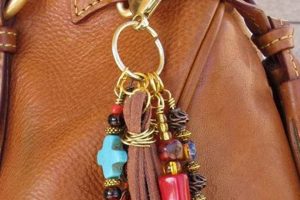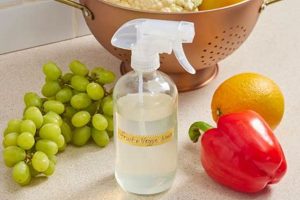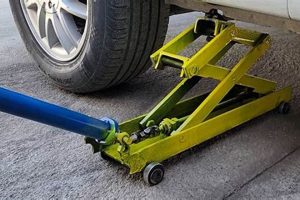A do-it-yourself enclosure designed to protect a sandbox from the elements and unwanted debris. This structure is typically constructed from readily available materials and customized to fit the specific dimensions of the sandbox it is intended to cover. Examples include covers made from wood, tarpaulins, or repurposed materials, often incorporating features like hinges for easy access or securing mechanisms to prevent wind displacement.
Implementing a protective barrier for a sandbox yields several advantages, contributing to the longevity of the sand, mitigating potential hazards, and reducing maintenance efforts. Such measures prevent rainwater saturation, which can lead to mold growth and render the sand unusable. Additionally, a well-constructed barrier can deter animals from using the sandbox as a litter box and keep out leaves and other organic matter. Historically, simple sandbox covers have been utilized to maintain cleanliness and extend the usability of the sand, particularly in outdoor environments frequented by children.
The subsequent discussion will delve into specific aspects of creating effective protective barriers. This includes selecting suitable materials, outlining step-by-step construction techniques, and providing considerations for ensuring the safety and durability of the finished product. Different design options and their respective advantages and disadvantages will also be explored.
Construction Guidance
The following points offer guidance for the successful construction of a protective structure for a sandbox. Careful adherence to these suggestions will contribute to a durable and effective outcome.
Tip 1: Material Selection: Prioritize weather-resistant materials such as treated lumber, marine-grade plywood, or durable tarpaulin. Untreated wood is susceptible to rot and warping, significantly reducing the lifespan of the finished product.
Tip 2: Accurate Measurement: Precise measurements of the sandbox dimensions are crucial. An ill-fitting barrier provides inadequate protection and may be structurally unstable. Measure the length, width, and any relevant angles to ensure a snug and secure fit.
Tip 3: Secure Fasteners: Utilize weather-resistant screws or bolts designed for outdoor use. Galvanized or stainless steel fasteners prevent rust and maintain the structural integrity of the cover over time. Consider the load-bearing capacity of the fasteners when selecting the appropriate size and quantity.
Tip 4: Proper Drainage: Incorporate a slight slope in the design to facilitate water runoff. This prevents water accumulation on the surface, minimizing the risk of water damage and promoting faster drying times.
Tip 5: Hinged Access: If designing a hinged barrier, select robust hinges capable of withstanding repeated use and exposure to the elements. Ensure the hinges are properly aligned to prevent binding or premature wear.
Tip 6: Securing Mechanism: Implement a secure locking or latching mechanism to prevent unauthorized access or accidental opening. Consider using child-proof latches for added safety, particularly if the sandbox is located in an area frequented by children.
Tip 7: Edge Protection: Apply edge banding or protective strips to exposed edges to prevent splintering or sharp corners. This enhances the overall safety of the structure and improves its aesthetic appeal.
In summary, the careful selection of materials, accurate measurements, robust fasteners, and appropriate design features are paramount to constructing a protective structure that effectively shields a sandbox from environmental elements and extends its usability.
The subsequent section will address various design considerations and provide detailed instructions for specific construction methods.
1. Material Durability
Material durability is a paramount consideration in the construction of a protective structure, directly influencing its longevity and effectiveness in safeguarding the sandbox and its contents from environmental stressors. The selection of appropriate materials is not merely an aesthetic choice but a critical factor in determining the overall lifespan and performance of the resulting barrier.
- Resistance to Environmental Degradation
The primary role of durable materials is to resist degradation from exposure to sunlight, moisture, temperature fluctuations, and biological factors. For instance, untreated wood, if used for a sandbox cover, will quickly rot and warp, necessitating frequent replacement. In contrast, pressure-treated lumber or durable composite materials demonstrate enhanced resistance to these elements, significantly extending the structure’s lifespan. Ignoring this facet leads to increased maintenance costs and premature failure of the cover.
- Impact of Material Strength on Structural Integrity
The inherent strength of the chosen material directly correlates with the overall structural integrity of the cover. Materials with high tensile strength and resistance to bending or breaking are better suited for withstanding external forces such as wind, snow load, or accidental impacts. A cover constructed from flimsy or brittle materials is prone to damage, compromising its ability to protect the sandbox. Real-world examples include the use of reinforced tarpaulins instead of thin plastic sheeting to resist tearing and sagging.
- Maintenance Requirements and Long-Term Cost
Durable materials often require less maintenance over their lifespan, translating to reduced long-term costs. For example, a metal cover with a rust-resistant coating may initially be more expensive than a wooden one, but the reduced need for painting, sealing, or replacement makes it a more cost-effective solution in the long run. The selection process should therefore consider not only the initial purchase price but also the projected maintenance demands and replacement frequency of each material option.
- Safety Considerations
Material durability contributes directly to safety. A cover made of weak material can break and cause injury. Opting for robust, splinter-resistant wood or using rounded, non-corrosive metal components can mitigate risks, creating a safer play environment. The long-term implications of inadequate material choices can lead to dangerous conditions.
In conclusion, the durability of materials used directly impacts the long-term performance of sandbox covers. Choosing resilient and low-maintenance options offers economic and safety advantages. This comprehensive approach ensures structural longevity and enhances overall value.
2. Precise Dimensions
The accurate determination of dimensions is fundamental to the successful fabrication and functionality of any self-constructed enclosure for a sandbox. Incorrect measur
ements introduce a cascade of potential problems, rendering the finished product ineffective or even detrimental. A cover with inadequate dimensions fails to protect the sandbox contents from environmental elements and external contaminants. Conversely, an excessively large cover presents safety hazards and compromises the intended aesthetic.
The connection between precise dimensions and the efficacy of a protective structure operates on a cause-and-effect basis. Inaccurate measurements are the direct cause of issues such as gaps between the cover and the sandbox perimeter, inadequate overlap to prevent rainwater intrusion, or instability due to an improper fit. For example, consider a wooden cover designed to overlap the sandbox edges by two inches. If the actual dimensions are off by even half an inch, the potential for water ingress increases substantially, leading to accelerated deterioration of the sand and the potential for mold growth. The same principle applies to covers fabricated from alternative materials, such as tarpaulins or repurposed materials.
Accurate dimensional specifications are not merely a best practice; they are a prerequisite for the practical application of a functional and safe sandbox enclosure. Investing the necessary time and effort to obtain precise measurements before commencing construction will ultimately result in a superior final product that effectively fulfills its intended purpose. Failure to do so results in increased construction costs and diminished performance.
3. Secure Closure
Secure closure is a critical attribute of a do-it-yourself cover for a sandbox, directly influencing its functionality and safety. The primary purpose of a secure closure mechanism is to prevent unauthorized access to the sandbox, protecting the sand from contamination by animals, debris, or unwanted use. A poorly designed or absent closure system compromises the entire structure, regardless of the quality of materials or construction.
The effectiveness of a secure closure is directly linked to preventing foreseeable incidents. For instance, a simple gravity latch or hasp can deter most animals, while a more robust locking mechanism is necessary to prevent children from accessing the sandbox unsupervised. Real-world examples include covers utilizing simple hook-and-eye latches, cam locks, or even securing the cover with bungee cords. The chosen closure system must be tailored to the specific circumstances and potential risks associated with the sandbox environment. A loose-fitting cover without any closure is analogous to leaving a door unlocked; it invites unwanted entry and defeats the purpose of the cover entirely.
In conclusion, secure closure is an indispensable element in the creation of a effective barrier. Its absence undermines the integrity of the entire system. Careful consideration of potential risks and implementation of a tailored, robust closure mechanism is essential. It is crucial to design closure based on sandbox’s usage, environment and population. Safety and hygiene are highly dependent of that.
4. Weather Resistance
Weather resistance is a critical performance parameter for any self-constructed protective structure, directly affecting the lifespan and effectiveness of a do-it-yourself cover. The degree to which a cover can withstand environmental elements dictates its ability to safeguard the sandbox from moisture, solar radiation, temperature extremes, and windborne debris.
- Material Selection and Environmental Exposure
The selection of appropriate materials constitutes the foundation of weather resistance. Materials must be inherently resistant to degradation caused by prolonged exposure to ultraviolet radiation, moisture, and temperature fluctuations. For instance, marine-grade plywood or treated lumber are often preferred over untreated wood due to their superior resistance to rot and warping. Tarpaulins should be UV-resistant and tear-proof to prevent degradation from sunlight and wind. Failure to consider material properties in relation to environmental conditions results in premature failure of the cover.
- Design Considerations for Water Management
The cover design must incorporate effective water management strategies. A sloped surface promotes water runoff, preventing accumulation that could lead to material degradation and potential mold growth. Overlapping edges prevent rainwater from seeping into the sandbox, maintaining the dryness of the sand. Drainage holes, strategically placed, allow for the release of any accumulated water. Poor water management directly compromises the cover’s ability to protect the sandbox contents.
- Fastener Selection and Corrosion Resistance
The fasteners used to assemble the cover must be resistant to corrosion to maintain structural integrity over time. Galvanized or stainless-steel screws and bolts are recommended for outdoor applications due to their ability to withstand exposure to moisture and corrosive elements. The use of non-corrosion-resistant fasteners will lead to weakening of the structure and eventual failure, necessitating repairs or replacement.
- Impact of Climate on Cover Longevity
The specific climate in which the sandbox is located significantly influences the required level of weather resistance. Areas with high humidity, heavy rainfall, or extreme temperature fluctuations demand more robust materials and design features than those in milder climates. Understanding the local weather patterns and selecting materials accordingly is essential for maximizing the lifespan and effectiveness of the cover.
In summation, achieving adequate weather resistance in a do-it-yourself cover involves a comprehensive approach that integrates appropriate material selection, effective water management strategies, corrosion-resistant fasteners, and consideration of the local climate. The failure to adequately address any of these aspects compromises the cover’s ability to protect the sandbox from environmental elements, ultimately reducing its lifespan and utility.
5. Child Safety
The integration of child safety considerations into the design and construction of a self-made sandbox cover is of paramount importance. The intended use of a sandbox as a play area for children necessitates that the cover, while serving its primary function of protection, does not introduce new hazards. A poorly designed or constructed cover can present risks of injury, entrapment, or exposure to harmful materials. The implementation of safety measures is not merely a desirable feature but an essential prerequisite for responsible construction.
The relationship between child safety and the physical characteristics of a sandbox cover is direct and consequential. Sharp edges, unsecured hinges, inadequate support structures, and the use of toxic materials can all lead to potential harm. For example, a cover that is too heavy for a child to lift safely can cause strain or injury if they attempt to open it. Similarly, the presence of small, detachable parts presents a choking hazard for younger children. Design choices should prioritize rounded edges, durable hinges with locking mechanisms, and the use of non-toxic fi
nishes. Practical applications include incorporating lightweight materials, implementing soft-close hinges to prevent finger pinching, and adhering to recognized safety standards for children’s play equipment. The omission of these considerations has demonstrable negative consequences, resulting in preventable injuries and compromising the intended safe play environment.
In conclusion, incorporating child safety principles into every stage of cover creation from initial design to final installation is fundamental. Vigilance in identifying potential hazards, adherence to safety standards, and the use of appropriate materials are indispensable. This proactive approach minimizes risks and enhances the overall usability and longevity of the sandbox. The creation of such covers is an undertaking that has direct bearing on the welfare of children.
6. Structural Integrity
Structural integrity is an indispensable attribute of a do-it-yourself cover for a sandbox. It refers to the ability of the cover to withstand applied loads and environmental stresses without undergoing significant deformation or failure. The absence of adequate structural integrity compromises the cover’s primary function of protecting the sandbox contents from the elements and external contaminants. A cover that lacks the requisite structural properties may collapse under snow load, warp due to moisture exposure, or break apart due to wind forces. The relationship between structural integrity and the overall performance of the cover is one of direct causality.
The design and construction of a structurally sound cover necessitate careful consideration of material selection, load-bearing capacity, and joint stability. For instance, the use of undersized lumber or inadequately secured joints can result in a structure that is prone to failure under even moderate stress. A real-world example involves a flat cover constructed from thin plywood, which, while initially appearing functional, may buckle or fracture under the weight of accumulated rainwater or snow. Conversely, a cover employing thicker lumber, reinforced framing, and robust fasteners demonstrates enhanced structural integrity and greater resistance to environmental forces. The application of engineering principles, such as calculating load distribution and selecting appropriate materials, is crucial for ensuring the cover’s long-term stability and performance.
In conclusion, structural integrity is a non-negotiable requirement for any DIY sandbox cover. Its presence dictates the cover’s ability to withstand environmental stresses and protect the sandbox contents effectively. Compromising on structural integrity leads to premature failure, increased maintenance costs, and potential safety hazards. The careful integration of appropriate materials, sound construction techniques, and an understanding of load-bearing principles are essential for creating a cover that provides reliable and long-lasting protection.
7. Drainage Design
Drainage design is a crucial engineering consideration in the creation of any protective cover for a sandbox, significantly affecting its longevity, functionality, and the preservation of the underlying sand. Without adequate provisions for water runoff and dispersal, a covering structure is prone to accumulating rainwater, leading to a host of detrimental effects. This section outlines several critical facets of drainage design in the context of self-constructed sandbox coverings.
- Surface Slope and Runoff Efficiency
The incorporation of a slope on the cover’s surface is fundamental to promoting efficient water runoff. A properly angled surface allows rainwater to drain away from the sandbox, preventing pooling and subsequent saturation of the cover material. The degree of slope should be calculated to accommodate typical rainfall intensities for the given geographic location. Real-world examples include covers with a subtle incline achieved through the use of angled supports or variations in material thickness. Insufficient slope results in water accumulation, accelerating material degradation and potentially leading to structural failure.
- Material Permeability and Water Absorption
The selection of materials with low permeability and minimal water absorption characteristics is essential. Materials that readily absorb water become heavier, increasing the structural load on the cover and potentially causing warping or sagging. Additionally, absorbed water creates a breeding ground for mold and mildew, compromising the hygiene of the sandbox environment. Examples of suitable materials include treated lumber, marine-grade plywood, and durable tarpaulins with waterproof coatings. High permeability necessitates increased maintenance and shortens the cover’s lifespan.
- Drainage Outlet Placement and Capacity
Strategic placement of drainage outlets, such as weep holes or channels, allows for the controlled release of any water that may penetrate the cover’s surface. The capacity of these outlets must be sufficient to handle anticipated rainfall volumes. Inadequate outlet capacity leads to water backup and potential overflow into the sandbox itself. Common examples include small holes drilled at the cover’s lowest points or integrated channels that direct water away from the sandbox perimeter. Proper outlet design is crucial for preventing water damage and maintaining the sand’s integrity.
- Edge Overhang and Water Deflection
Incorporating an edge overhang in the cover design effectively deflects rainwater away from the sides of the sandbox, preventing water from seeping into the sand. The overhang should extend sufficiently beyond the sandbox perimeter to account for wind-driven rain. Real-world examples include covers with extended edges fabricated from flexible materials or rigid extensions integrated into the structural design. Insufficient overhang allows water to flow directly down the sides of the sandbox, compromising its protection.
The facets of drainage design collectively contribute to the overall effectiveness of a DIY sandbox covering in protecting the sand from moisture-related damage. Failure to adequately address these considerations results in a cover that is prone to water accumulation, material degradation, and ultimately, compromised functionality. Proper drainage is thus a critical factor in ensuring the long-term usability and hygiene of the sandbox environment.
Frequently Asked Questions
The following questions address common concerns and provide detailed information regarding the design, construction, and maintenance of effective sandbox enclosures.
Question 1: What are the primary benefits of utilizing a protective barrier for a sandbox?
A protective barrier primarily serves to prevent the contamination of the sand by environmental elements, animals, and debris. It also aids in maintaining appropriate moisture levels and extending the lifespan of the sand itself.
Question 2: Which materials are most suitable for constructing a durable and weather-resistant enclosure?
Pressure-treated lumber, marine-grade plywood, and UV-resistant tarpaulins are generally recommended due to their ability to withstand exposure to moisture, sunlight, and temperature fluctuations. The selection of inappropriate materials leads to premature failure of the structure.
Employing robust latches, hasps, or locking mechanisms is crucial. The selection of the appropriate fastening system should consider the potential risks associated with unauthorized access, including animal intrusion and unsupervised child access.
Question 4: What design features contribute to effective water drainage and prevent water accumulation?
Incorporating a slight slope to facilitate runoff, utilizing materials with low permeability, and providing strategically placed drainage outlets are essential design considerations. Failure to address water drainage results in material degradation and potential mold growth.
Question 5: How can the safety of children be prioritized during the design and construction process?
Prioritizing rounded edges, implementing soft-close hinges, using non-toxic materials, and ensuring that the cover is not excessively heavy are critical safety measures. Neglecting these considerations increases the risk of injury.
Question 6: What maintenance procedures are necessary to ensure the longevity and functionality of the barrier?
Regularly inspecting the structure for signs of damage, applying protective coatings to prevent material degradation, and cleaning the surface to remove debris are essential maintenance practices. Neglecting these procedures leads to accelerated deterioration and reduced effectiveness.
In summary, the construction of an effective protective enclosure requires careful attention to material selection, design features, safety considerations, and ongoing maintenance. A comprehensive approach ensures the long-term usability and safety of the sandbox.
The subsequent section will provide step-by-step instructions for constructing a specific type of protective enclosure.
Conclusion
The preceding discussion has extensively explored the considerations inherent in creating a protective structure for a sandbox. Emphasis has been placed on material selection, design considerations, safety protocols, and maintenance procedures as essential components of a durable and effective solution. A comprehensive understanding of these elements is paramount to the successful implementation of a barrier that safeguards the sandbox environment from environmental elements and potential hazards.
The creation of a functional and secure enclosure represents a significant undertaking that warrants careful planning and execution. Adherence to established best practices and diligent attention to detail are crucial for maximizing the longevity and utility of the finished product. Ultimately, the construction of a reliable “diy cover for sandbox” is an investment in the long-term usability and hygiene of a designated play area, yielding tangible benefits in terms of reduced maintenance and enhanced safety. The responsibility for creating this safe and reliable play environment rests upon the builder.







